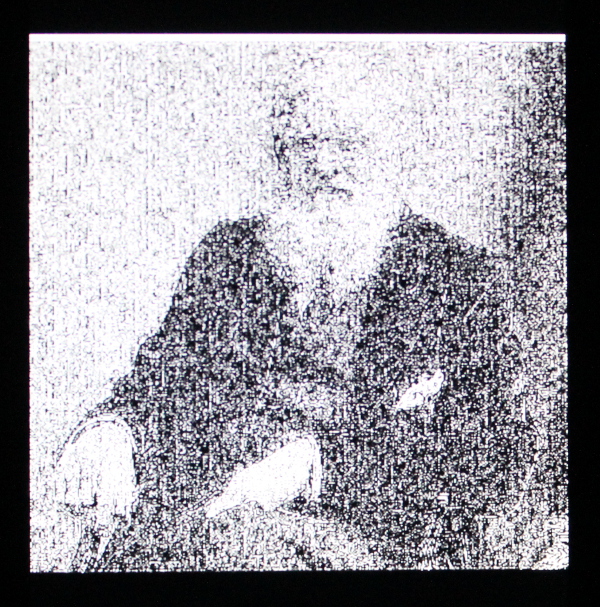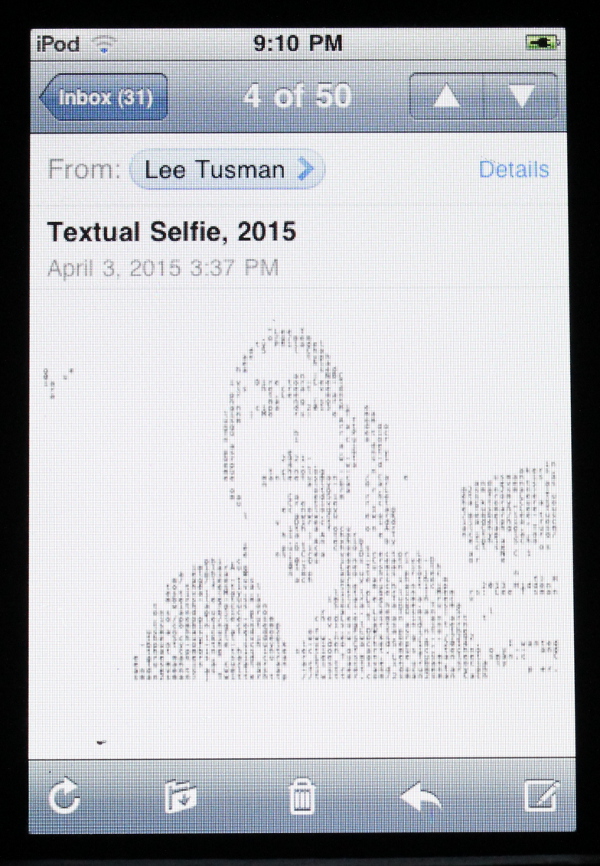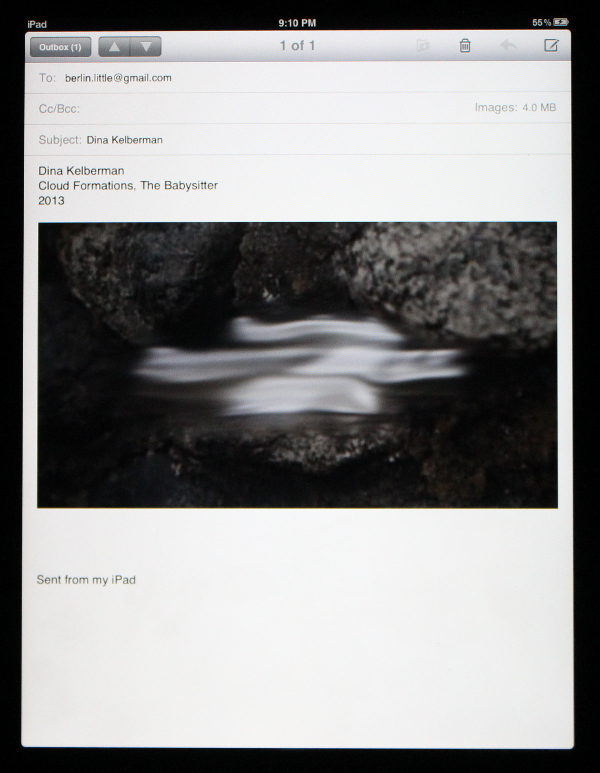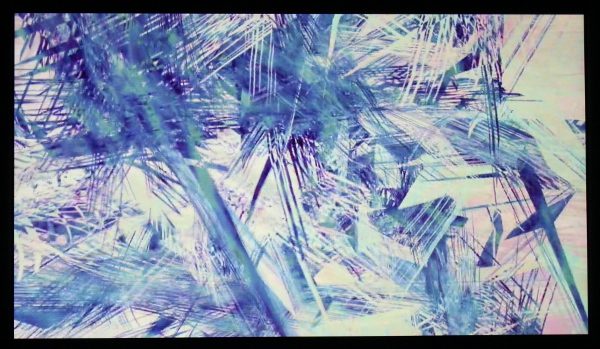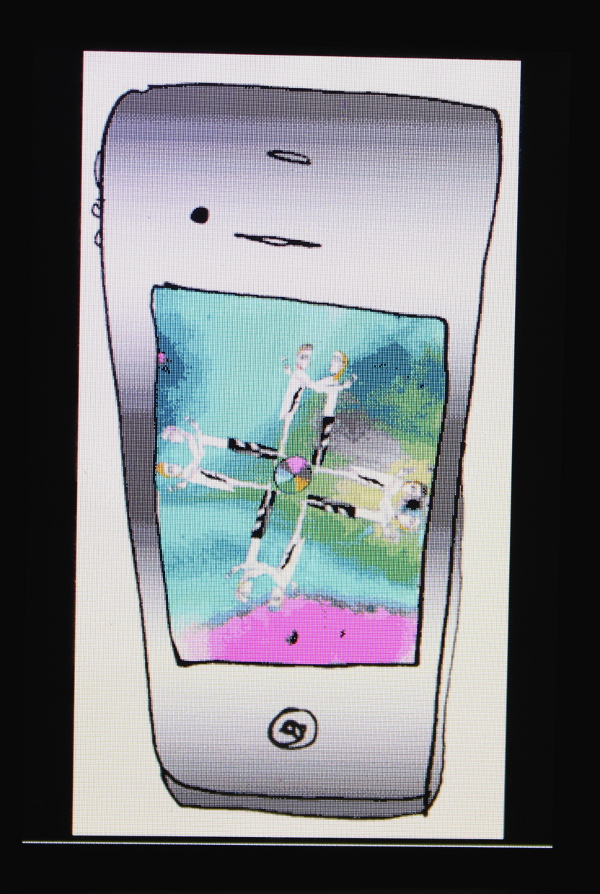
Little Berlin discovers vision on the small screen with mobile devices
It’s safe to say that in 2015, practically anyone reading this article uses some sort of mobile device on a daily basis. Whether we are texting, calling, getting directions, updating social media or checking the weather, these tools have become such integral fixtures in so many of our activities that it’s hard to imagine a world without them. A visit to Kensington’s Little Berlin provides a perspective on handheld devices that requires considerably more imagination: smart phone artwork.
The exhibit “Screens,” curated by Peter Erickson, confronts visitors with a gallery full of everyday forms in somewhat foreign configurations. Entering the space at nighttime, the room is completely unlit save for the 16 glowing displays hung on the walls as if they were framed photographs or paintings. The ambiance itself is familiar enough, calling to mind late nights working on laptops or sleepy article-skimming before bed. But in this setting, we encounter a degree of anxiety about pressing or swiping the buttons or touchscreens. After all, it’s typically a major faux pas to finger the art.
With this uneasy truce in effect, visitors find themselves interacting with the sleek Apple interfaces they would otherwise endlessly grope in more distant, almost reverent ways. Surely we have all seen our fair share of animated .gifs on the internet, but here these trendy moving images are skewed toward purposes of contemplation instead of amusement merely by their arrangement within the white cube of the gallery space. Some other well-known platforms such as Instagram and Vine make appearances amongst the looping .gifs, similarly challenging our notions of the boundaries between art and social media. A Facebook-owned, image-sharing app like Instagram might seem trite when viewing selfies on break at work, but in the right context, it is potentially a means to entirely different ends.
Margot Bowman, “Keep It Under Your Hat (excerpt).”
As might be expected of a Net art show, the contributors hail from all across the country, as well as from abroad. London-based Margot Bowman’s “Keep It Under Your Hat (excerpt)” is indicative of many characteristics in this genre. We find the comfortably meta rendition of an iPhone on the screen of an iPhone, the multicolored wait cursor (a.k.a., Pinwheel of Death) spinning at its center. For anyone who has encountered this cursor without having saved a project, the addition of this icon makes a burlesque of ill-timed system error. The sketchy, clip art-style phone is part of a longer video by Bowman, and also includes four pairs of figures spinning along with the cursor, each staring into an iPhone, tapping themselves into some infinite regression of interconnectedness and slapstick.
Patrick Koziol, “ReRegrammer.”
Patrick Koziol’s work is conveniently displayed as an animated .gif, but actually lives on Instagram. His project “ReRegrammer” plays with the trend of screen capturing an Instagram picture in order to ‘regram’ and share the image via one’s own account. Starting with a photo of Alfred Russell Wallace – the biologist, explorer and often overlooked contemporary to Charles Darwin who independently conceived of a theory of evolution – Koziol takes a screenshot of the photo each day and regrams it for an iterative experiment in image degradation. For the first few shares, the photo remains recognizable, but quickly descends into a haze of static, lines and digital distortion, presenting an apt visual metaphor for the naturalist destined to reside in Darwin’s long shadow.
Lee Tusman, “Textual Selfie.”
Like a tribute to ASCII art of yore, Lee Tusman’s “Textual Selfie” provides still images of his text-based camera system that translates live video feeds into portraits composed entirely out of text. After entering one’s name, the program scours Google for information based on the user’s identity, and recreates the video feed with the data it finds. In this way, the images that emerge not only resemble the subject, but are assembled using search results that likely reference the individual. From a standpoint of digital identity, these representations are perhaps even more honest than a simple snapshot.
Dina Kelberman, “Cloud Formations, The Babysitter.”
Dina Kelberman creates “Cloud Formations” by smudging the text of title sequences from films and playing back the resulting frames. Her inclusion here is from “The Babysitter,” and it sees a blob of amorphous, white stuff wobbling over a stone-filled creek bed. An ode to overstimulation and lost meaning, the titles that so many of us disregard in favor of narratives and escapist tropes suddenly capture our attention when they are obscured beyond comprehension. Although this is certainly not a means for encouraging moviegoers to watch the credits, it raises some valid points about what we see and what we avoid.
Natalia Stuyk, still from “UUUU.”
At the center of it all, there is a veritable gem in the form of a Vimeo video called “UUUU” courtesy of Natalia Stuyk. This experiment in stretched sound and 3D animation is as captivating as it is intangible, a crystalline expanse of undulating shards, layers and textures set to a high-pitched, droning soundtrack. This piece is more formal than some of the others, and it seems to avoid the social commentary and conceptualizing that some of the other works here rely on, but it is mesmerizing nonetheless.
Next time the occasionally frustrating parade of constant connection gets you down, just remember “Screens.” Checking e-mails and fielding text messages may sometimes seem like a chore, but never forget that with a little ingenuity, these devices are capable of a whole lot more. “Screens” will be on view throughout April.
Little Berlin is located at 2430 Coral St., Philadelphia; [email protected]; littleberlin.org.
Recent Content
-
Artsarticle ·
-
Artsarticle ·
-
Artsarticle ·
